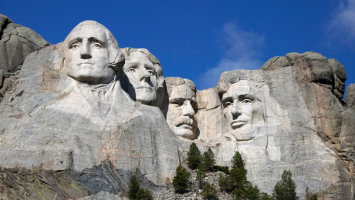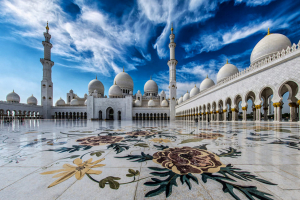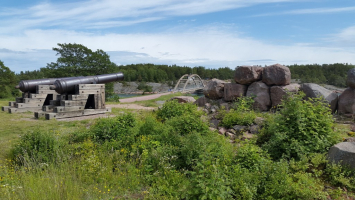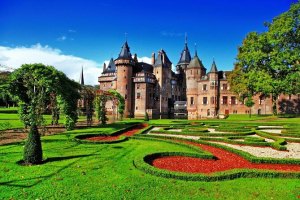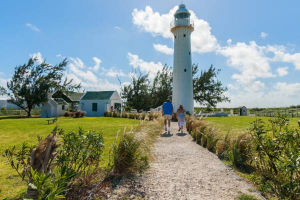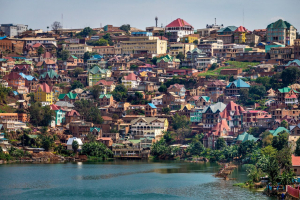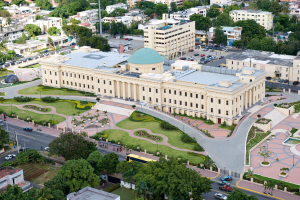Top 10 Most Beautiful Historical Sites in the Czech Republic
The most well-known landmarks in Czechia are among Europe's most stunning landmarks. This makes it all the more unfortunate that this incredible country, with ... read more...its breathtaking landscapes, one-of-a-kind architecture, thought-provoking art, vibrant nightlife, delectable cuisine, phenomenal beer, wonderful culture, and welcoming people, is frequently overlooked, misunderstood, or simply forgotten about. Let’s discover the most beautiful historical sites in the Czech Republic now!
-
Wenceslas Square is a shopping avenue in the heart of Prague that has seen hundreds of years of history. Despite its name, the area is more of a long, broad boulevard than a square. It was originally titled "Horse Market" in the fourteenth century under King Charles IV's reign, but was renamed "Wenceslas Square" in the nineteenth century after the patron saint of Bohemia, Saint Wenceslas. During this age of heightened nationalism, the majestic statue of Saint Wenceslas on horseback was constructed in the square. The statue is surrounded by statues of other Bohemian saints.
Following a harsh police raid on a student demonstration in 1989, Wenceslas Square became a focal point for enraged locals. The statement of the end of communism in Czechoslovakia was made in the Melantrich Building on the square.
In the square, there is a small memorial to the victims of communism, which can feel out of place given the square's capitalist takeover. Expect to encounter at least as many residents as visitors at Wenceslas Square today, and keep an eye out for any potential political protests, as they frequently end up here.
Location: New Town of Prague
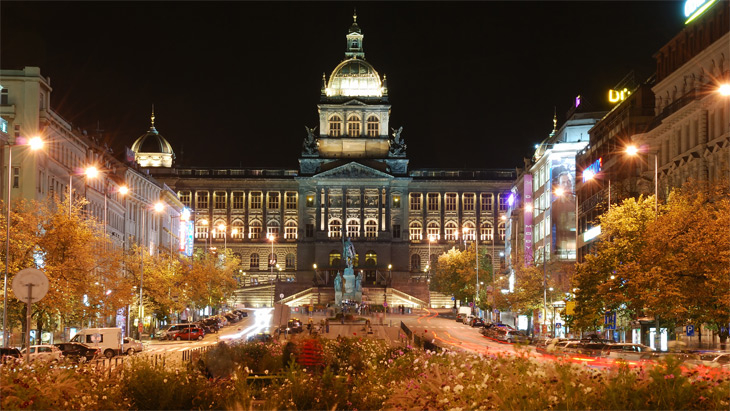
Source: Welcome to Prague Source: Rick Steves' Europe -
Prague Castle is one of the most beautiful historical sites in the Czech Republic, a UNESCO World Heritage Site, and the world's largest castle complex. Prague Castle was built in roughly 880 AD by Prince Boivoj of the Premyslid Dynasty, and it has since served as the seat of Czech monarchs, religious leaders, Holy Roman emperors, and chiefs of state, a duty it still performs today. Hitler stayed in the castle for a night in 1939, and Reinhard Heydrich used it as his headquarters during the Nazi occupation. After the war, the castle became the headquarters of the new communist government, and it is still the seat of the Czech Republic's Head of State today.
Prague Castle now houses a plethora of knowledge, archeological finds, relics, and displays about Czech history and heritage. The spectacular gothic architecture, tower views, and crown jewels of Saint Vitus Cathedral, the changing of the Castle Guard once every hour, and the many galleries in and around the Castle are all popular attractions. Travelers can start their day at the information centers in the second and third courtyards of Prague Castle. You can get information, maps, and even professional tours of Prague Castle here.
Location: Prague
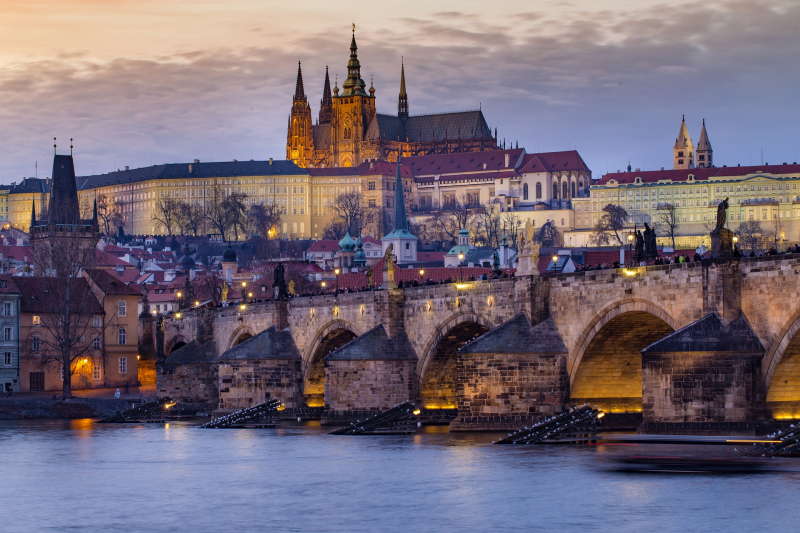
Source: Prague Castle Tickets Source: Real Prague Guides -
The Star Královsk Palác, commonly known as the Old Royal Palace, is a beautiful Prague castle. It is located at 119 08 Hradany, Prague 1. This well-preserved and tastefully kept Prague castle was formerly the seat of Bohemian monarchs and princes. Over the ages, it has undergone numerous restorations. The Bohemian Chancellery was originally housed at this historical site in Prague.
When touring the Old Royal Palace, the Vladislav Hall is one of the attractions. Coronations, celebrations, banquets, and even chivalric tournaments have all taken place in the hall over the years. The palace also contains an All Saints' Church in addition to Vladislav Hall. It is established, and Petr Parler contributes to the palace's beauty. The castle also has a medieval theater and a medieval market with beautiful and luxury goods that make excellent mementos.
The former offices of the Bohemian Chancellery are accessible through a door in the hall's southwest corner. The Protestant lords were rising against the Bohemian estates, and the Habsburg emperor threw two of his counselors and their secretary out the window on May 23, 1618, in the second room. They escaped because the dung-filled moat stopped their fall, but the Second Defenestration of Prague launched the Thirty Years' War.
Location: Prague
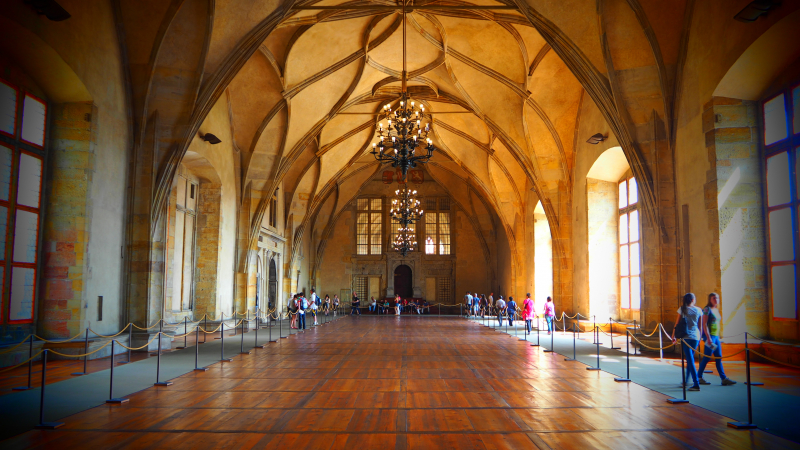
Source: Commons Wikipedia Source: Lily's Channel - Around the world -
Old Town Square is a lively historic square in Prague's Old Town area, located in Staromstské nám. It is situated between Wenceslas Square and the Charles Bridge, two of the city's most famous sights. It dates back to the 10th century, when it served as a bustling marketplace along European trade routes. Prague's Old Town Square, perhaps the city's most recognized landmark, is surrounded by stunning architecture and incorporates monuments and well-known Czech icons. Old Town Square is one of the most beautiful historical sites in the Czech Republic.
The Church of St Nicholas and the Rococo Kinsky Palace are two nearby attractions worth visiting. Due to the closing of the churches, the magnificent Gothic House at the Stone Bell, as well as tributes to Jan Hus, were also inaccessible.
A memorial of commemorative stones honoring the execution of 27 Czech nobility in 1621 may also be found in the square. There's also the magnificent Prague Meridian Tower, which is an excellent photo opportunity. The Astronomical Clock, which was built in 1410, is perhaps the most magnificent of them. This Prague landmark is also one of Czechia's most well-known sights and one of the world's most stunning astronomical clocks.
Location: Prague
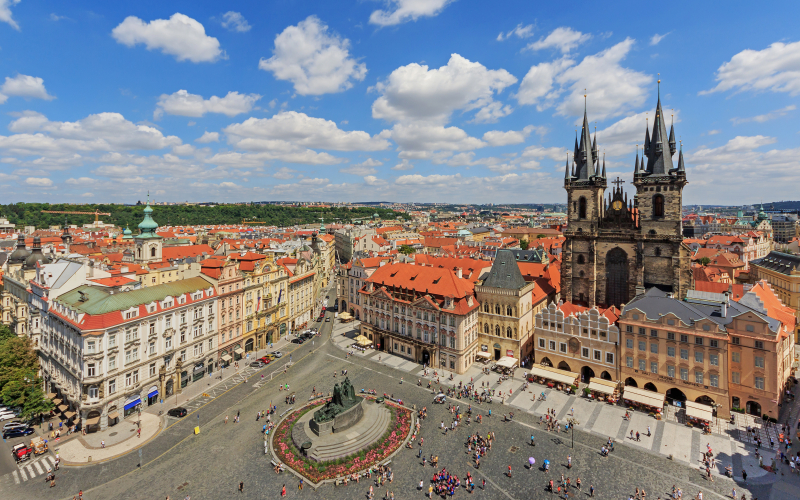
Source: Wikipedia Source: Rick Steves' Europe -
In the picturesque town of Benesov, the majestic four-winged, three-story Konopiste Castle may be found. The beautiful castle of Konopit was founded in 1294 and is best known for being the final official residence of the Austrian Archduke and Franz Ferdinand before his assassination in 1914, which precipitated the catastrophic First World War. This majestic castle houses the bullet that killed him.
One of the main attractions and features to see at the Konopiste Castle is the Archduke and his heir's incredible collection of hunting weapons and trophies, which is ironic to say the least. Visitors can take four-hour guided tours of the castle interiors, including the Franz Ferdinand d'Este family rooms, where they can see original furnishings and important art collections that have been maintained.
In the eighteenth century, Archduke Franz Ferdinand turned the enormous Konopiste Castle baroque gardens into a manicured park, complete with an English-style Rose Garden and conservatories housing a variety of tropical and subtropical plants. A one-of-a-kind cork pavilion is also available.
Location: Benesov
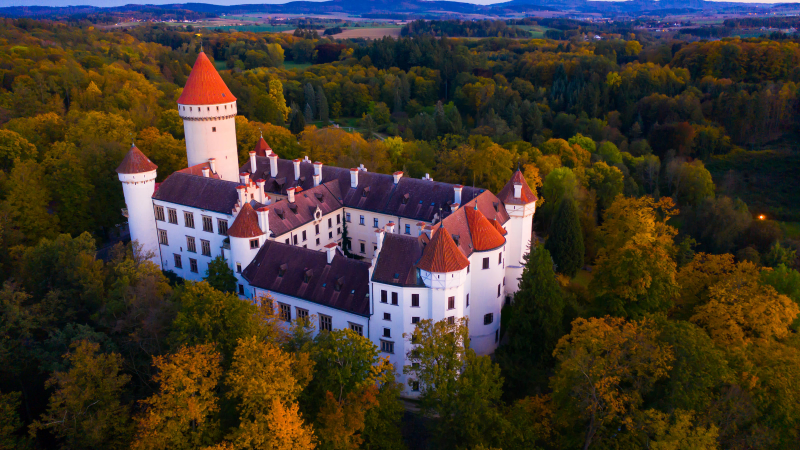
Source: planetofhotels Source: Carla K World -
One of Prague's most beautiful historical sites in the Czech Republic, is the Charles Bridge. The Moldau River runs through the heart of Czechia's capital city, and the bridge crosses it. The Charles Bridge, which dates back to 1267 and is known for its Gothic and Baroque architecture, is one of the country's oldest landmarks. At the height of his rule, Charles IV commissioned the Charles Bridge, which he dutifully named for himself!
The Gothic-style stone bridge connects Prague Castle with a number of other prominent landmarks along the river's edge, and is notable for the 30 baroque-style statues that line the bridge. This stunning structure has influenced much of Prague's later architecture, as well as other European bridges, making it one of the continent's most important works of art.
The avenue of 30 primarily Baroque statues and statuaries on the balustrade creates a unique artistic connection with the Gothic bridge beneath it. The majority of the sculptures were built between 1683 and 1714. They show a variety of saints and patron saints who were revered in the period. Matthias Braun, Jan Brokoff, and his sons Michael Joseph and Ferdinand Maxmilian were among the notable Bohemian sculptors of the time who contributed to the bridge's decoration.
Location: Prague
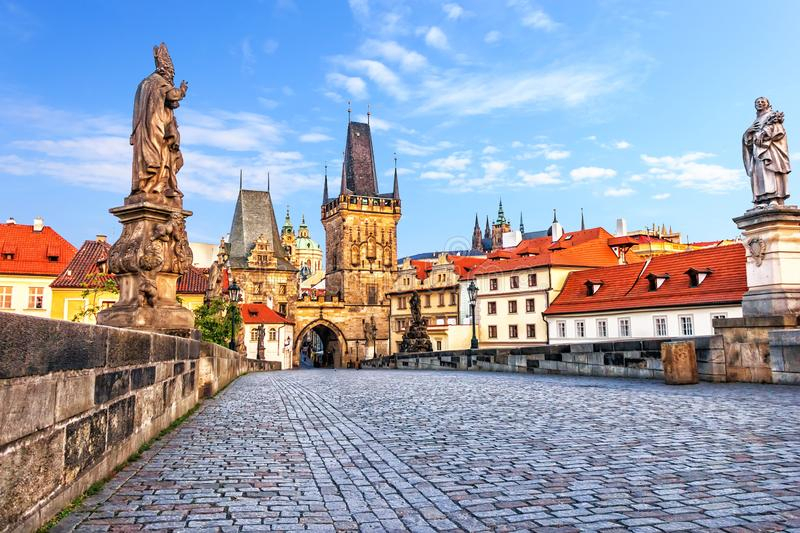
Source: Dreamstime Source: Philip Dean -
Many prominent members of Prague's Jewish community have been laid to rest in the city's Old Jewish Cemetery. In this quiet but lovely graveyard, almost 12,000 headstones compete for space, the oldest of which originates from 1439 and belongs to the scholar Avigdor Karo. The Old Jewish Cemetery, which was in operation until 1787, is said to have had many more burials than the headstones, which were likely stacked one on top of the other. Among the numerous graves are those of Rabbi Loew, the golem's creator, and Mordechai Maisel, the previous mayor of Prague's Jewish Quarter.
The Old Jewish Cemetery in Prague is one of the world's oldest surviving Jewish cemeteries, and it is the most important site in the Prague Jewish Town, along with the Old-New Synagogue.
It's uncertain when the cemetery was established. The earliest gravestone, however, is from 1439 and is that of rabbi and poet Avigdor Kara. The gravestones document a continuous sequence of burials dating back to the middle of the 15th century. Emperor Joseph II had outlawed burials within the city walls for sanitary reasons three years prior, as evidenced by the final gravestone, which dates from 1787.
Location: Prague
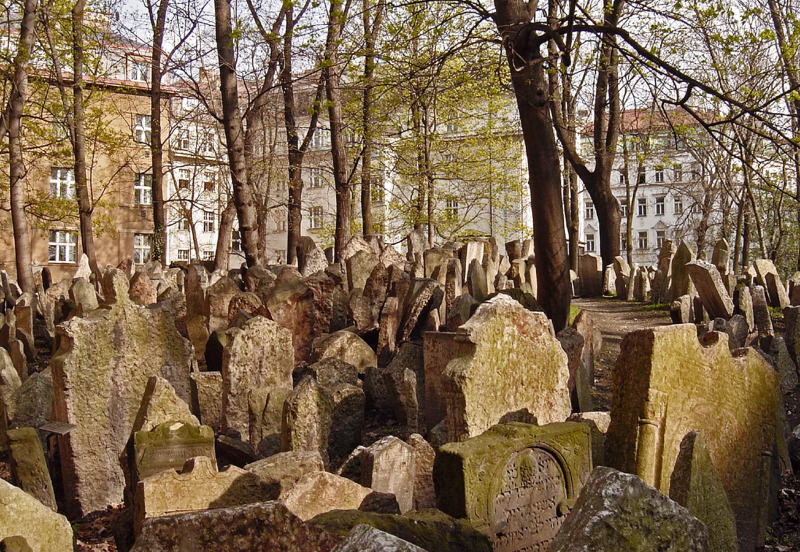
Source: Itinari Source: Mark Podwal -
The oldest surviving church building within Prague Castle is Saint George's Basilica in Prague, Czech Republic. Vratislaus I of Bohemia constructed the basilica in 920. It's named for Saint George. It is part of the group of structures that make up the castle, the nation's political capital and spiritual heart. It is mostly Romanesque in style. This is definitely one of the most beautiful historical sites in the Czech Republic.
The basilica, which was consecrated in 921, is one of Prague's earliest Romanesque churches. Vratislaus I began the construction of the church. The church had been completed but not consecrated when Vratislaus died in 921. Wenceslaus I finished the project and buried his grandmother, Ludmila of Bohemia, there after she died. The current stunning front and the rebuilding of the entire convent date from the Early Baroque period. The Baroque Chapel of St. John Nepomuk was erected to the church in the early 18th century by architect F.M. Kanka.
The Basilica of Saint George now serves as a concert hall. Several prominent figures in the history of the Bohemia Kingdom, notably Ludmila of Bohemia, are buried at the Basilica. Ludmila was King Wencelaus' grandmother and a martyr as well as a saint, buried in a chapel dedicated to her.
Location: Prague
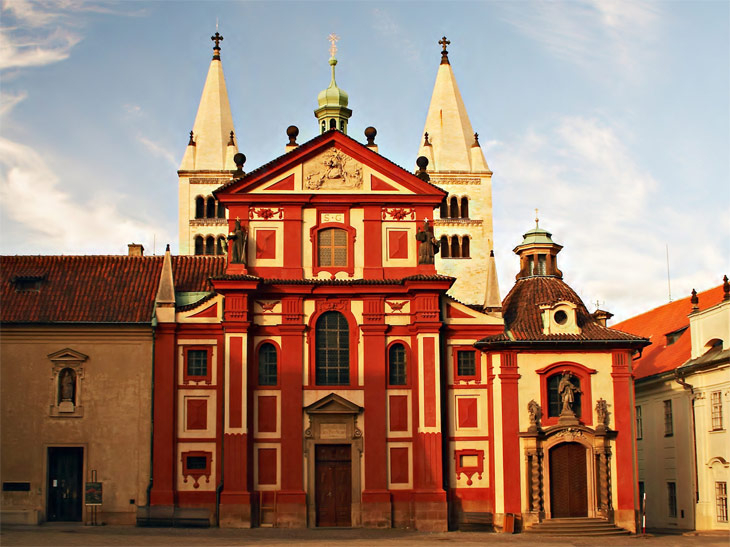
Source: Welcome to Prague Source: Travel Experiences -
St Nicholas Church in Prague was a Jesuit church built between 1673 and 1755 to replace the parish of St Nicholas, which had existed since the 13th century. It's in Malá Strana and is widely recognized as one of Central Europe's most beautiful Baroque structures. The architecture of St Nicholas Church, which was built during a period of significant social upheaval, including the re-establishment of Catholicism, reflected and contributed to these developments, having been designed in the dramatic Baroque style.
The church's distinctive white stucco façade is topped by a massive dome, and the interior is adorned with beautiful frescos and precise carvings, some of which portray St Nicholas' life. This is even more astounding when one considers the fact that the church was previously even more ornate. In fact, when Emperor Joseph II ordered the dissolution of many monasteries in 1781, many ornaments were taken.
The St Nicholas Church is open daily (with slightly shortened hours in the winter) and visitors are charged a nominal fee. If you have the time, the bell tower (accessible via a separate entrance) is well worth seeing: the views of the city are unrivaled. On the way up, keep an eye out for the urinal, which was erected during the communist era for personnel stationed at the top of the tower to spy on the American Embassy.
Location: Prague
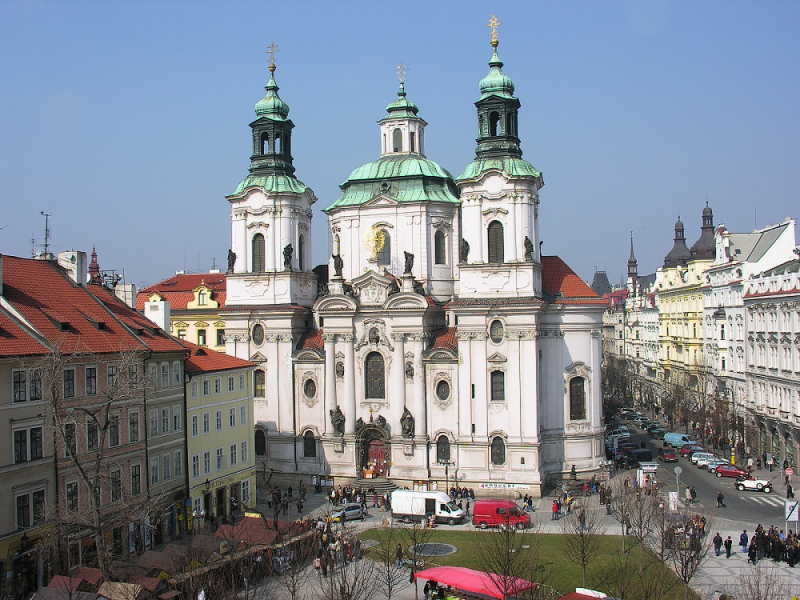
Source: Structurae 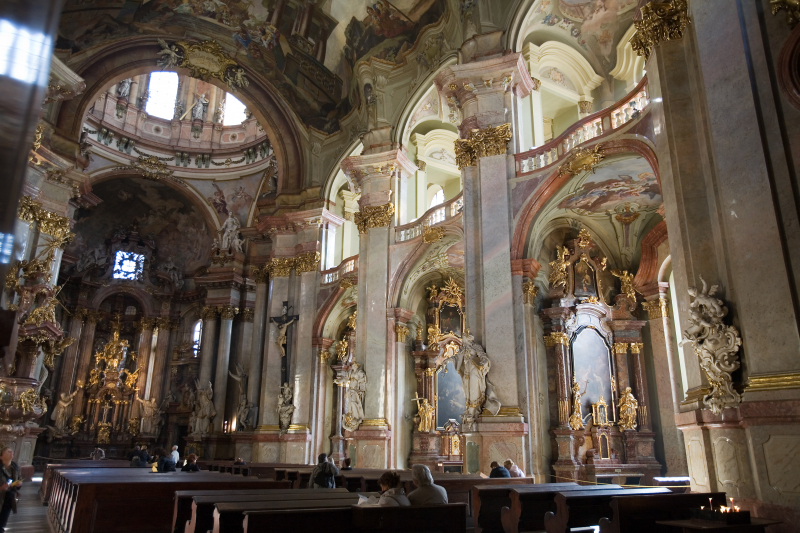
Source: Wikipedia Commons -
One of the most beautiful historical sites in the Czech Republic, St Barbara's Cathedral, located in the charming town of Kutná Hora, offers stunning views of the town and surrounding landscape. The Cathedral of St Barbara is a late Gothic masterpiece and one of Prague's four extant cathedral-type monuments.
The Cathedral of the Assumption of Our Lady, as well as St John the Baptist and Kutná Hora's historical core, are all placed on the UNESCO Heritage list with this cathedral. This is a nice spot for a more laid-back outing. Enjoy the sun's beams while appreciating the amazing paintings and stained glass splendor of the cathedral throughout the day.
One of the most rewarding aspects of visiting St Barbara's Cathedral is admiring the baroque furnishings in this gorgeous setting and exploring the nooks and crannies around the cathedral area. On an individual tour of the church, printed guides and tickets are supplied. Going inside, whether alone or with your family, is a beautiful experience.
Location: Kutná Hora
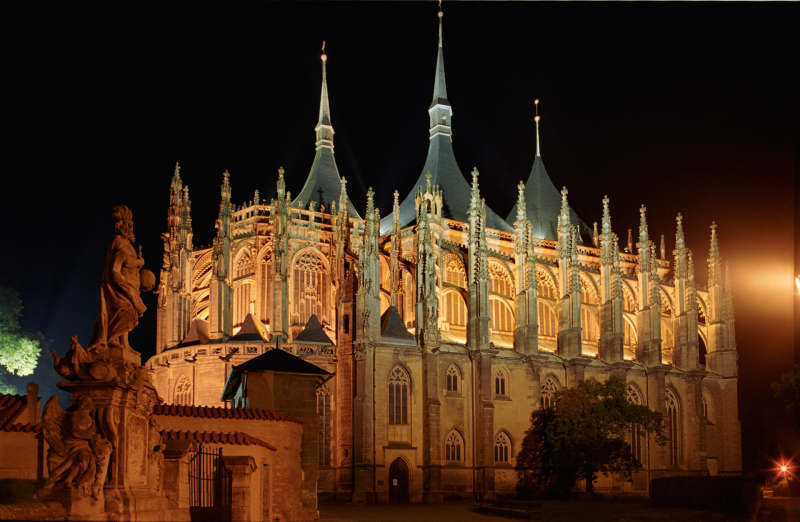
Source: Wikipedia 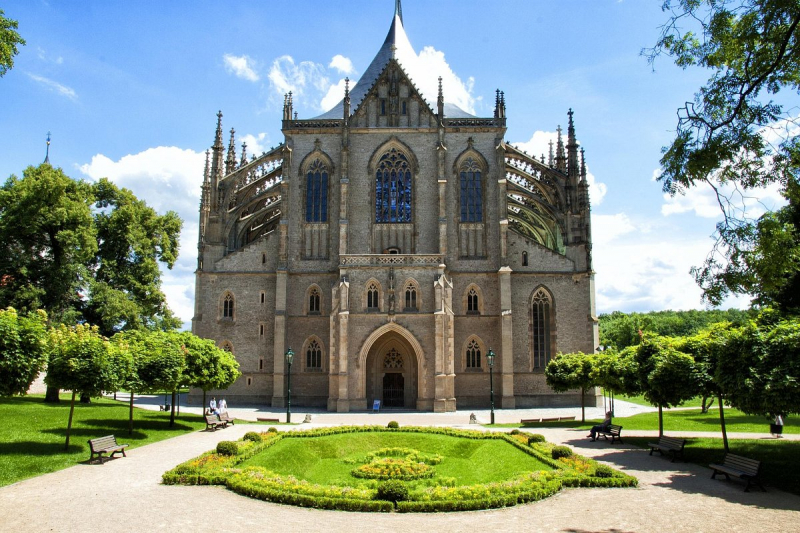
Source: Tripadvisor












